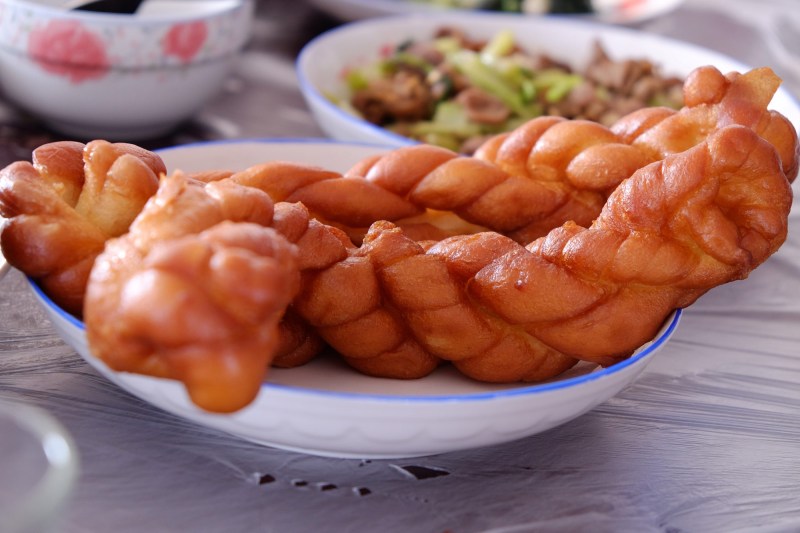
The podium for global cuisine is too often hogged by countries like France, Italy, and China. But there are incredible food cultures all over, such as the rainbow nation of South Africa.
Admittedly, many Americans can’t name a South African dish. We couldn’t pick out bobotie from biltong — at a restaurant or in general. But in the name of broadening your mind and palate, we are here to change that. South Africa boasts dish after interesting dish, informed by both indigenous communities as well as immigrants and even former rulers.
Suzaan Hauptfleisch runs Kaia Wine Bar in New York. Founded in 2011, the Upper East Side joint specializes in South African cuisine and wine. Hauptfleisch grew up on a generational freestate farm in South Africa with a pair of mothers who cooked or baked often. “We always had something amazing to eat even coming home from school,” she recalled. Her late mother Susan made incredible Tamatiebredie, a tomato stew that Hauptfleisch and her partner have finally learned how to recreate after many tries.
She calls South African food a confluence of various cultures. “It is a beautiful mix and representation of our rainbow nation,” she says. “It has wonderful traditional dishes, of course, but there is also such a creative energy and a new fresh and exciting perspective,” especially among today’s South African chefs.
Her childhood memories and the meals she grew up with on the farm inspire the food at Kaia. Favorites include an elk carpaccio with her mother’s mustard. Normally, the dish would be served with an African meat, but it’s next to impossible to reliably get springbok or kudu in the States. Another favorite is bobotie, served with yellow rice and raisins, and baby back ribs, prepared with rooibos and cranberry sauce.
Wine culture is massive in South Africa, too, and that rubs off on the Kaia way. The bar offers more than 70 South African wines by the glass, an impressive feat. “I want the most amount of South African wines to hit the most amount of palates,” Hauptfleisch said. It’s a scene full of tasty wines, most notably Chenin Blanc and Pinotage, but also a broad array of other great varietals.
History
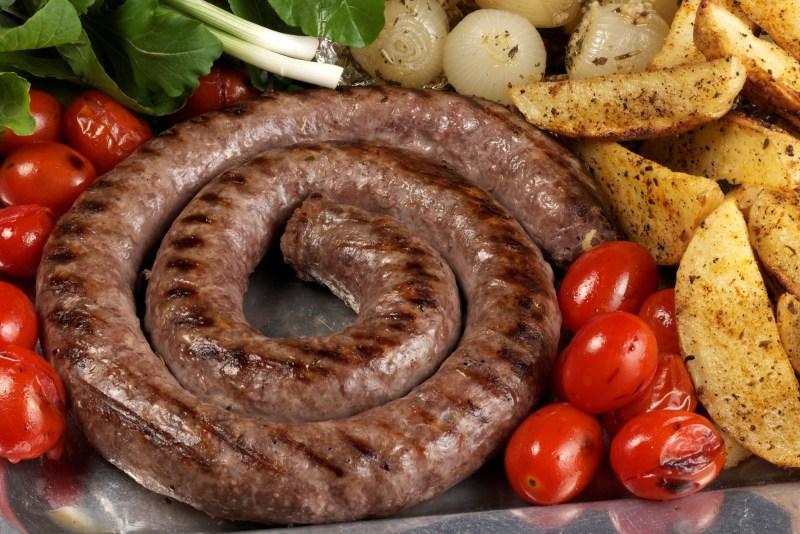
There are many layers to South Africa and, as a natural byproduct, its cuisine. Very generally speaking, native communities like the Khoisan kicked the customs off, doing a lot of foraging and taking to a lot of edible plants, including perhaps most famously, rooibos. Cooked grains were quite popular and wild game was very much prized, often suitable for royalty.
Much later, in the 17th century, the Dutch and British introduced other ingredients and philosophies. British rule saw a lot of people forced into labor, including from other countries such as India. This nation in particular has very much influenced the South African palate. Apartheid was not kind to the indigenous South African culture, but the cuisine has experienced a renaissance since it finally ended in the early 1990s.
Signature dishes
Hauptfleisch said there are many signature dishes in South African cuisine. She offers braai cooking as a national pastime, essentially the local version of barbecue. Everybody does it there and neighborhoods are often thick with the smoke from this style of cooking. “It is that one thing all South African cultures do and agree on — the great equalizer amongst us,” she said. Below are a few others that jump to her mind.
Bobotie

Made of minced meat and egg, bobotie is typically made with beef or lamb, and occasionally pork. A mix of spices is thrown in, like ginger and marjoram, and curry powder, along with lemon rind. It’s complex and fit with an eggy topping, dried fruit, as well as milk-soaked bread. Often, it’s dished up alongside some yellow rice.
Milk tart
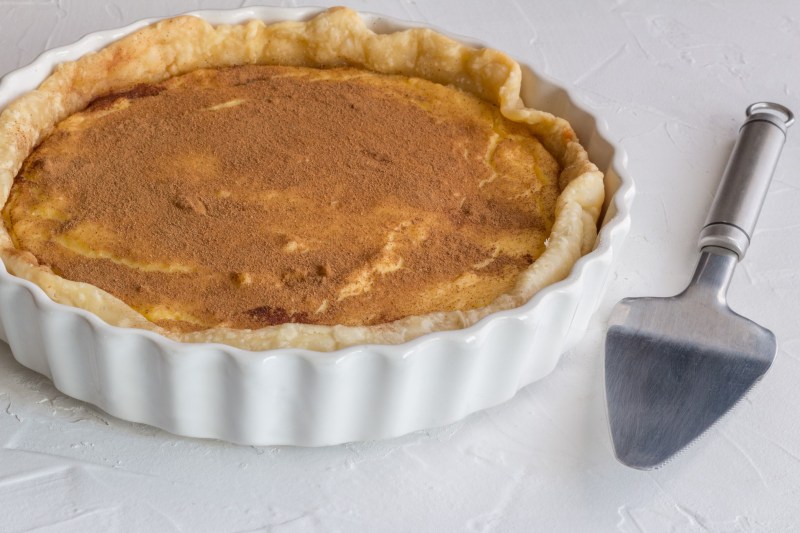
This delicate dish is served with tea or as a dessert item. It involves a sweet pastry crust filled with custard, often topped with cinnamon.
Boerowors
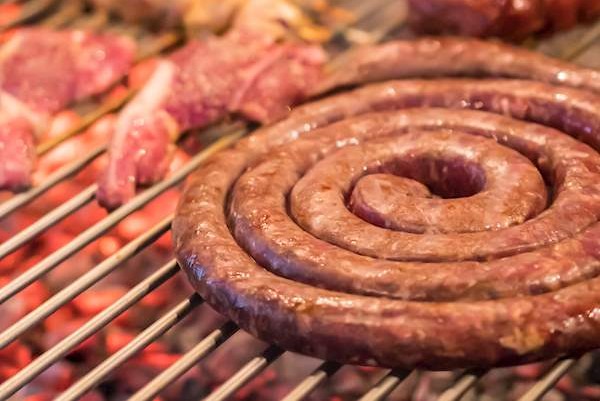
This type of sausage is enjoyed all over the southern stretch of the continent. It’s made from a variety of meats and spices and traditionally given the braai treatment (grilled over charcoal). Like sausage, there are many different riffs on the dish, and often, it’s enjoyed on a bun, like a hot dog.
Biltong
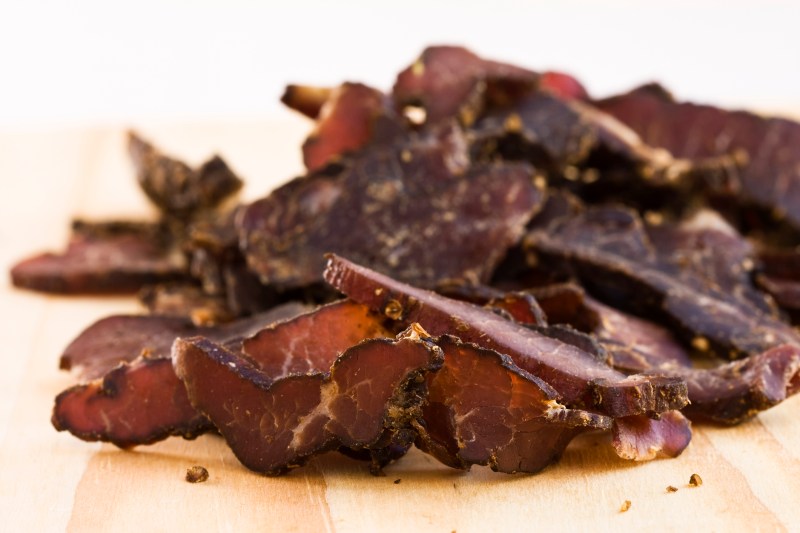
A lot like jerky, this form of dried meat is usually made with beef and hit with black pepper, salt, vinegar, and coriander. It can also be made from game animals like kudu or wildebeest.
Koeksister
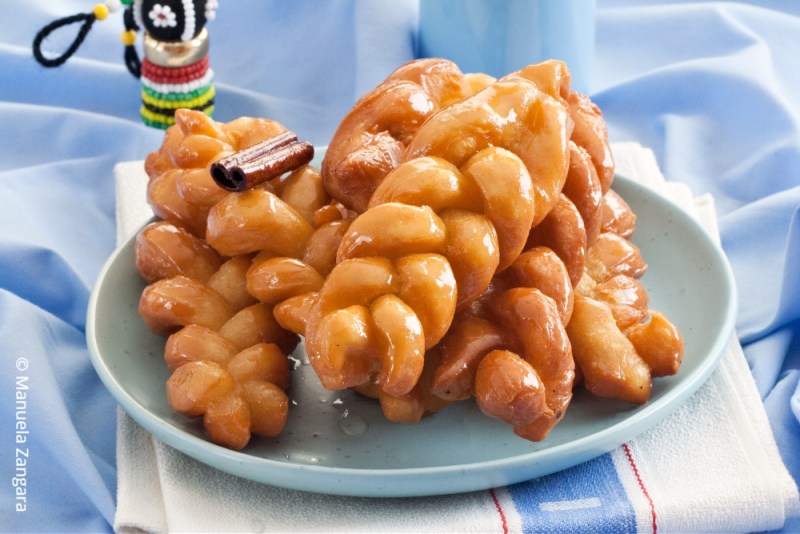
Something like a donut, this confectionery is made of fried dough hit with syrup or honey. The strips are woven together almost like a braid and the sweet taste reminds of wild honey.
Umngqusho
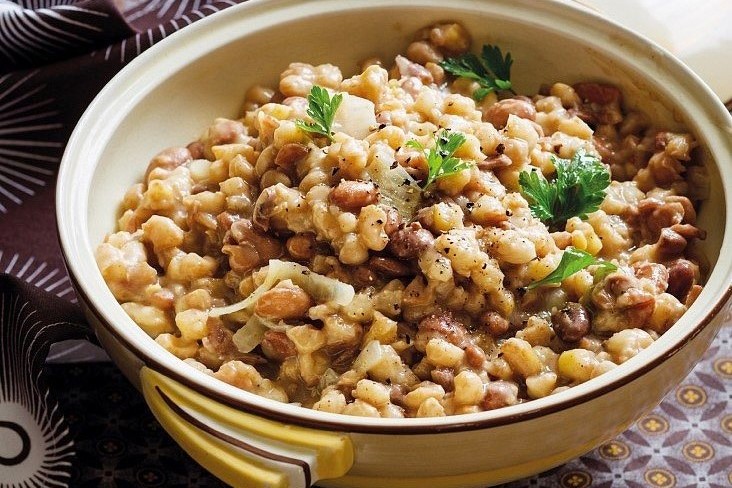
Hauptfleisch said this dish (along with the next two listed) is especially popular among Black South Africans. It is made with samp (a course kind of cornmeal), beans, butter, potatoes, onions, chilies, and lemons. One version of the dish is believed to be the late and great Nelson Mandela’s favorite dish.
Chakalaka
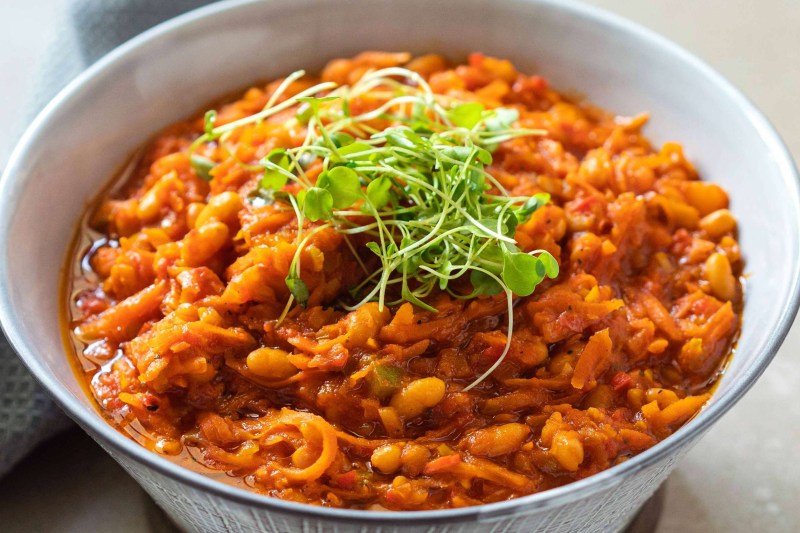
A vegetable relish that is often spicy, chakalaka usually accompanies bread, pap, curries, or stews. the ingredients tend to include beans, peppers, cabbage, carrots, and tomatoes, treated with a variety of spices like ginger, cayenne pepper, thyme, and smoked paprika.
Pap

Similar to polenta or grits, pap is maize porridge and is very popular in the country. It’s tasty on its own but also serves as a proper bed for other items, sauces, and stews.
What vegetarian dishes are there in South African cuisine?
A lot of South African cuisine includes meat dishes, but there are a handful of vegetarian options as well. We’ve covered a couple above (chakalaka and pap), so here are a couple more:
- Bunny chow: This iconic South African dish features hollowed-out bread filled with a savory curry. Traditionally made with lamb, vegetarian versions can be filled with curried lentils, beans, or vegetables.
- Samoosas: These savory pastries come in various fillings, including vegetarian options like spiced potatoes, lentils, or spinach and cheese.
Bobotie recipe
Ingredients:
- Minced lamb or beef, or a mixture of the two
- Butter, vegetable oil
- 2 onions, chopped
- 1/2 teaspoon crushed garlic
- 1 tablespoon curry powder
- 1 teaspoon ground turmeric
- 2 slices bread, crumbled
- 1/4 cup milk
- Finely grated rind and juice of 1/2 small lemon
- 1 egg
- 1 teaspoon salt, milled black pepper
- 3 ounces dried apricots, chopped
- 1 Granny Smith apple peeled, cored and chopped
- 1/4 cup sultanas (golden raisins)
- 1 1/2 ounces slivered almonds, roasted in a dry frying pan
- 6 lemon, orange, or bay leaves
For the topping:
- 1 cup milk
- 2 eggs
- 1/2 teaspoon salt
Method:
- Set the oven to 325 degrees Fahrenheit. Butter a large casserole. Heat butter and oil in a saucepan and fry the onion and garlic until translucent. Stir in the curry powder and turmeric, and cook briefly until fragrant. Remove the pot from the heat.
- Mix in the minced meat. Mix together the crumbs, milk, lemon rind and juice, egg, salt, pepper, apricots, apple, sultanas (golden raisins) and almonds and blend. Pile into the casserole and level the top. Roll up the leaves and bury them at regular intervals. Seal with foil and bake for 1 1/4 hours. Increase the oven temperature to 400 degrees Fahrenheit. Mix together the topping milk, eggs and salt (you may require extra topping if you’ve used a very large casserole dish), pour over and bake uncovered for a further 15 minutes until cooked and lightly browned. Serve with yellow rice and blatjang.


